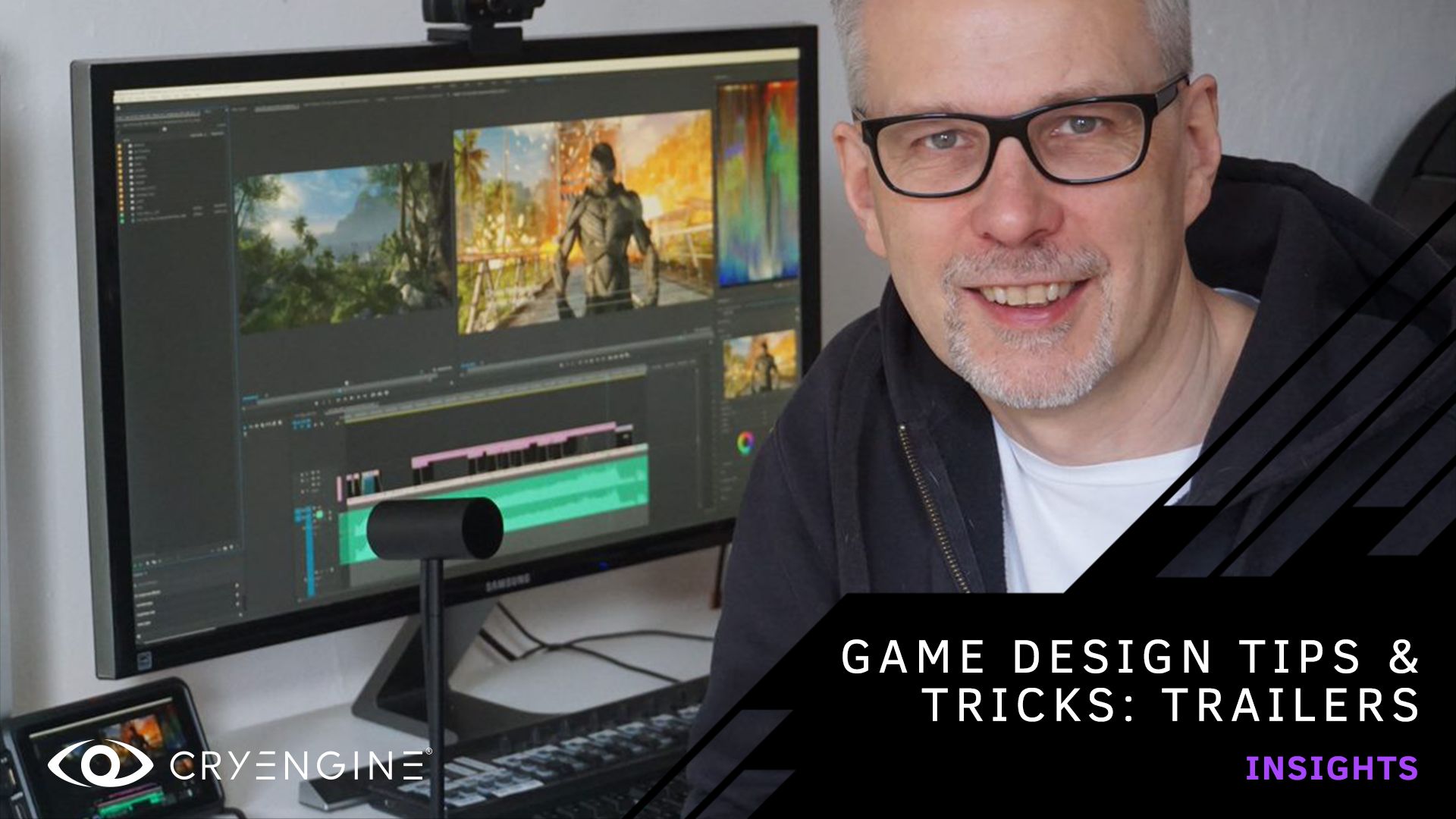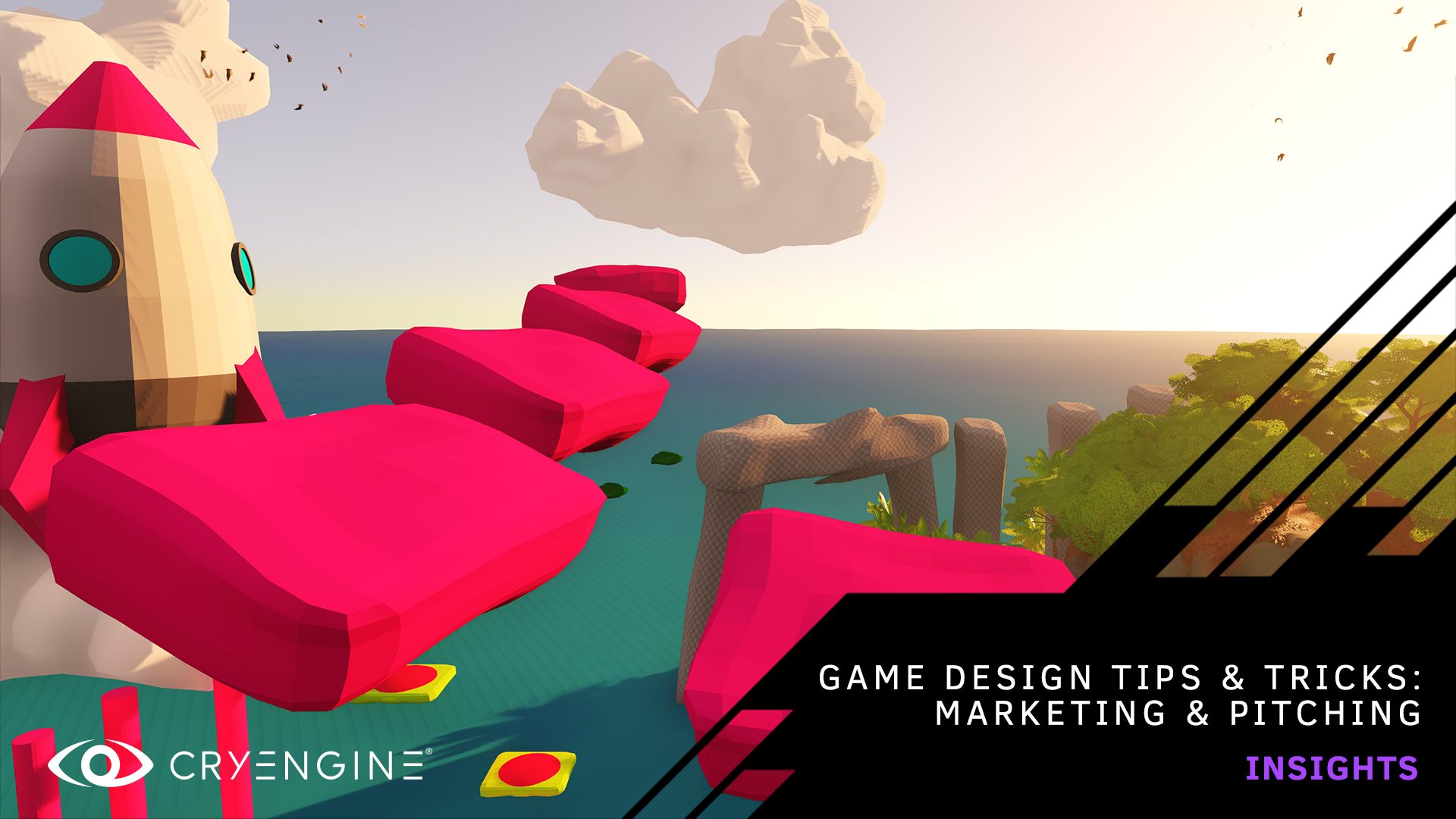
CRYENGINE Forge: Five reasons to choose CRYENGINE for your next game
Brian Dilg, our Learning Manager, went from a complete novice to a CryEngineer. Here are his five reasons why CRYENGINE is the ideal choice for quickly and easily creating games, with tips and tricks from his personal journey with the engine.
“Christmas of 1989 was a memorable one at our house: a new video game based on the Spielberg film Indiana Jones and the Last Crusade appeared under the Christmas tree. 256 colors! 640x480 pixel resolution! MIDI soundtrack! ”
“This game completely transfixed my brother and I. We spent hours playing this game on our father’s PC, eagerly decoding clues, avoiding Nazis, and navigating our way to find the grail. Then we did it all over again. ”
“When I recently dug up a walkthrough video of this game, I was shocked. I thought I knew exactly what to expect: the flat colors, simple graphics and heavy pixilation. But it wasn’t the way it looked that shocked me; it was my own internal reaction. Even though I knew technically what to expect, the part of me who got so much pleasure out of playing that game did not remember it as low-fi or awkward or limited at all. In my memory, it was a state-of-the-art immersive experience. ”
“The game design captured my imagination. Nothing else mattered.”

“If you’ve ever dipped your toe into using one of today’s full-featured game engines or asset creation tools, you probably know just how I felt when I first arrived at Crytek. It was not the warm fuzzy feeling that you get when you dig into a fantastic game that is going to get you through a long winter. It was more of a this-is-complicated feeling. A little over a year later, I’m having a blast building prototypes, developing tutorials, and showing people the magic you can create with this incredible tool. I’m afraid I may even like building games more than playing them. Just don’t tell my brother, who is still an avid gamer today. ”
“Here are a few things I find particularly magical about the engine, with a few tips and tricks to get you started if you’re completely new to game dev and the engine. I can’t wait to see what you can create with CRYENGINE.”
1: Zero to amazing in no time

“With real-time lighting, global illumination, and the legendary CRYENGINE renderer, it’s easy to make your game look amazing in a few hours. Here are some of the steps I suggest following to get going: sculpt and paint your terrain with slope- and altitude-driven textures. Light that comes from directly overhead doesn’t do much for any game, so one of the first things I do is open the Environment Editor and just drag the time of day and latitude of the game location to get to magic hour or whatever you like in seconds. Being a long-time cinematographer, I am admittedly obsessed with light, so every time I come up with a look I love, I save it out to an XML file that I can load instantly into any level, even during game play. ”
“There are few things more fun than using the Vegetation Editor to paint trees, grass, rocks and other natural features anywhere you like – or even fill your entire level instantly using procedural vegetation to assign a vegetation group directly to a terrain layer. Branches and leaves even bend in the wind. You can also blend entities naturally into your terrain using the soft depth test feature. ”

“Import terrain from your favorite terrain generation tool, or sculpt it by hand directly in the engine. Create canyons or dizzying mountain roads by using the river and road tools to carve through the terrain. Turn on the procedural volumetric clouds that move with the wind and take on the color of the sunlight. Use volumetric fog, rain, snow and other environmental phenomenon to create the ambience of a foggy swamp or a clear winter day. ”
“Add your own lights and control their direction, diffusion, color, intensity, shadows, and animation – all in real time. Or you can skip terrain and natural elements and design a complete fantasy world, manipulating gravity and even time. Use the easy whiteboxing Designer tool to quickly lay out your level design. Lastly, don’t forget to drop in at least one global environment probe to create realistic reflections. ”
“If there is something else that a computer can do to provide more pure fun than world-building, I have yet to find it.”
2: Build compelling demos fast
“Whether you already have a full game design, just want to learn quickly without having to create all of your own art, or want to rapidly create a prototype for a short-term game jam or as a proof of concept, you don’t have to make all of your own entities, textures, etc. just to get started. Instead, search the Marketplace and install the free GameSDK to get your hands on thousands of free assets and functionality. That includes everything from player and NPC characters with thousands of animations and modifiable behaviors to vehicles, boats, and even helicopters they can drive and fly; weapons to provide game play action; buildings and innumerable props. There is no shame in prototyping or even shipping your game with free assets; if nothing else, it’s both a great way to learn and to create demos to help sell your concept with real art instead of simple whiteboxed assets. Once you have your design nailed down, you can always replace assets with your own if you like. ”

“You’ll find everything you need to populate a landscape: giant boulders to detailed pebbles, trees and foliage for every season, animated animals, fish and insects, and innumerable details like flowers and mushrooms. There are materials and textures both organic and man-made and dynamic decals to break up terrain textures. One of the easiest tools of all to use are the particle effects – you literally just drag them into your level and trigger them whenever you like. There are explosions large and small, fire and smoke, falling leaves, sparks – you name it. Particles add incredible realism and excitement to a level, and if you really get hooked on them, try creating your own effects from scratch using the new Particle Editor. ”

“As you progress, you’ll want to dig deeper and learn how to replace those GameSDK characters and vehicles with your own models, modify the behavior scripts, re-map the bones to suit your characters and attachments like weapons or props, edit the vehicle scripts to adjust gears, speeds, suspension, etc. Keep in mind that although GameSDK provides a first person shooter character, it’s easy to disable that character and build any kind of game with it. The beginner’s course shows you exactly how in a few steps.”
3) No coding!
“More of a visual, interactive thinker? Does the idea of writing code make you break out in a sweat? Flow Graph is an easy to use visual scripting tool you can use to create complete game mechanics. It’s the same tool Crytek has used to build games like the CRYSIS series. ”

“You can also assemble your own custom-designed entities visually with Entity Components. Like snapping together Legos, you can pick and choose components including 3D meshes, cameras, physics proxies, sensor triggers, thrusters, colliders, visual effects, AI entities and behaviors, and much more. ”
“Schematyc, a new visual scripting language, even lets you assemble entity components and script behavior in a single visual interface. While Flow Graph is essentially a level scripting tool, Schematyc lets you exercise fine control entity by entity along with precise timing over game events. It’s still in the early stages, but even a little experimentation will give you a sense of the revolutionary effect these modular tools are going to have on game development.”
4: Learn by building a game
“When I came to Crytek, I had never used a game engine – and I was hired to teach CRYENGINE! So I know exactly what it feels like when you’re trying to learn such a huge tool and have no idea how to go about it. Since my first task was obviously to learn the engine, I built the beginner’s course I wish I’d had, putting everything I learned from the experts into a form that anyone new to the engine could understand. ”
“This free beginner’s course was recently given a major update, and it provides a fun introduction to most of the major systems while you build a fully functional “flappy boid” style game. Best of all, it’s all driven by visual scripting, so you don’t have to be a programmer just to make game mechanics. ”
“A lot of people prefer the video tutorials, which have the advantage of letting you watch someone make exactly what you’re trying to build. Even if you’re not a big reader, I suggest you also consult the course workbook for additional tips. The introduction to the course also explains exactly how to get CRYENGINE and GameSDK installed so you can quickly get busy making games, as well as introducing you to the basics of level design.”
5: Performance and scalability for even the largest projects
“Sometimes it seems to me that because CRYENGINE is most famous for being the engine behind Crytek’s AAA-scale games like the CRYSIS series that new game developers think of it as suitable only for very large scale games – and expect it to be extra difficult to use. So I like to offer two thoughts: the engine is written in lightning-fast C++, and all of the source code is open so even the most expert users can get the most out of it. Given that it has produced everything from CRYSIS to Hunt: Showdown and our VR games, you can count on it to handle anything you throw at it. ”
“However, it would be a shame to deprive the myriad talented and ambitious indie developers out there of a chance to build games with a tool that will make their work look as good as it possibly can. The fact is that you can build anything with the engine, large or small, while remaining confident that you won’t outgrow the engine’s power as your game designs evolve. ”
“I particularly love the tools that let me see what’s going on “under the hood” to fine-tune game mechanics. For example, you can preview and tweak physics and AI behavior and even see NPCs’ states of mind as they react to game events. Here’s how: in the Sandbox, open the Console (Tools > Advanced > Console) and type ai_DebugDraw 1 to turn on AI debugging. Voila – you can watch your AIs think and react! You can even see where they’re looking and what they hear. ”

“The Console tool looks scary in the beginning when you have no idea what you’re looking for (and for many of its commands, there is a button in the Sandbox that does the same thing anyway), but here’s a tip for use throughout the interface: just try typing a word you do know to narrow down your search, and don’t be afraid to just try things. You can also toggle the AI debugger on/off in game mode (Ctrl-G) by pressing F11. If things are moving too fast or too slowly for you, just alter the time scale by typing t_scale followed by a space and a number in the Console. 1 is normal (100%) speed; .5 is half speed, etc. ”
“Ever wonder how heavy the Abrams tank in GameSDK is? Or how far it could fall before it’s destroyed? Find out while having some serious fun by using Pull Physics to toss entities around, revealing their physics proxies and weight in the process. You can even push NPCs around, see how individual joints react, see how vegetation bends when you touch it, and fine tune entity properties. I also love to use this tool to scatter entities in an organic way as determined by physics, then capture the physics state and let them permanently stay wherever they landed. This is especially useful for ragdolls, so they fall and lay naturally in the level. (Tip: Capture Physics State only affects currently selected objects – so be sure to select first!) ”
“You can use the Flow Graph debugger to watch signals being passed in real time or one frame at a time as they’re passed from node to node. When it’s time to play test, dig into MemReplay and Statoscope to identify bottlenecks, fine-tune the performance of your game, and get it ready to ship. Webinars, master classes and tutorials like this one on game optimization show you how.”

“Game development is a deep dive. You know it has taken over your life when you find yourself on Google Maps street view and surprised that you can’t move the camera up in the air, or you drive your partner nuts on vacation because you keep stopping to take pictures of broken down buildings that you want to model for your next level. ”
“It will demand your most innovative thinking, thrill you when you bring your world to life, and keep you up long into the night cursing as you try to find your bugs. But one day, if you stick with it, you may just run into somebody who says “Hey – I played that game for about a zillion hours! That was sick! ”
“Dive in, go forth and make magic!”
Are you starting out on your game dev journey? Or a seasoned dev that’s new to CRYENGINE? Let us know what you’re making or let us know your feedback on how we can help in the comments, on the forum, or via Facebook, and Twitter. Don’t forget to join the community and our CRYENGINE development team over on the official CRYENGINE Discord channel.



